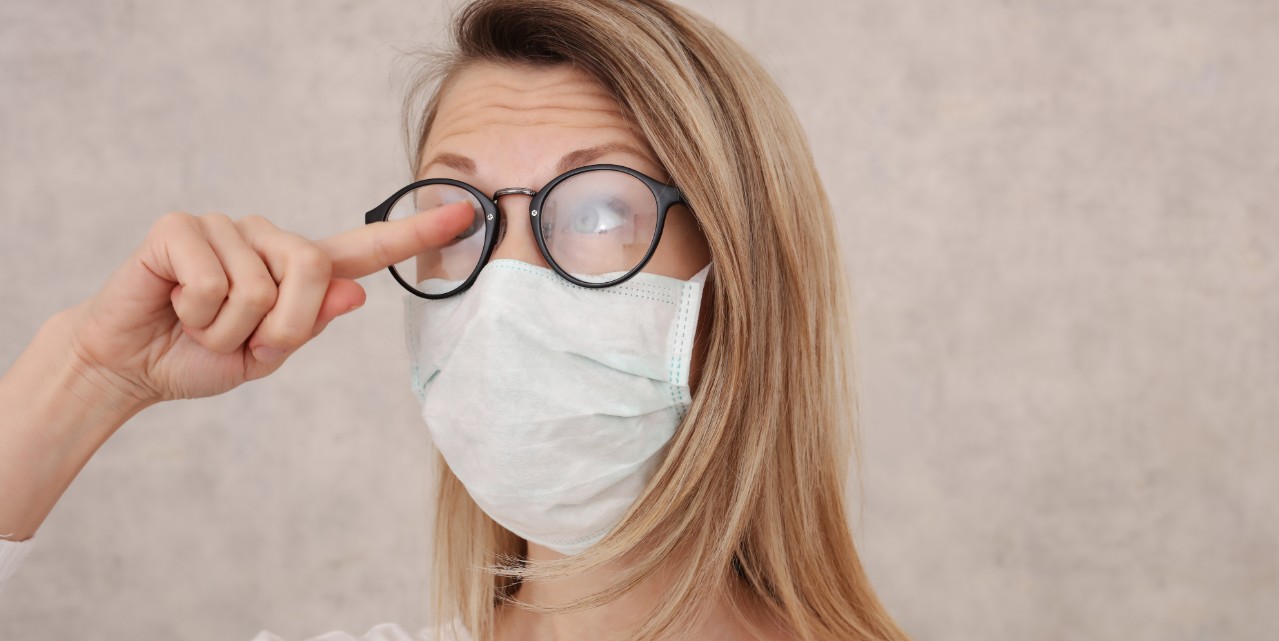As the world progressively accepts our new 'COVID normal', face masks are increasingly becoming a part of our wardrobes. In Victoria, people are now being asked to wear masks whenever they cannot maintain social distancing, for example.
However while we might feel better for the extra protection and the thought that we’re doing the right thing by wearing a mask, those of us who wear glasses will have an annoying side effect to deal with: our glasses fogging up when warm breath escapes from the top of our mask and hits the cooler lens of our glasses, causing condensation to form.
When we’ve got a global pandemic and all its implications to worry about right now, the last thing we need is foggy glasses to add to our problems. So here are some ways to combat this obstacle.
Wash the lenses
Published in the Annals of The Royal College of Surgeons of England, was a paper addressing this very problem due to surgeons finding their glasses would fog while wearing their surgical masks. This could obviously pose great risk to the person under their scalpel!
The paper suggests that immediately before wearing a face mask, the wearer should wash the spectacles with soapy water and shake off the excess. Then, let the spectacles air dry or dry the lenses gently with a soft tissue before putting them back on. This action is said to prevent the lenses from misting up when the face mask is worn because the soap leaves behind a thin film that acts as a fog barrier.
Tighten the fit of the mask
Often extra warm breath is puffed out the top of the mask when the fit is too loose. If you can adjust the straps so the face mask sits flush against your face, try that.
Check out this dentist’s face mask hack to help you get a tighter fit.

Put a tissue inside the top of the mask
Forbes suggests that if you fold a tissue horizontally and put it between your face and the top of your mask, so it sits over the bridge of your nose, the moisture from your breath will be absorbed by the tissue instead of hitting your glasses lenses.
Use your glasses to seal the top of your mask
If you’re able to pull your mask up high on your nose, you can use your glasses to seal it and shape it to your face. This will help secure the fit which will prevent the warm air from escaping through the top of the mask. If you try this, make sure your mask still fits properly over your face so your nose and mouth are completely covered.
Buy a mask that molds to your nose
Many masks being sold currently have nose bridges sewn into them – flexible strips that allow you to bend and shape them so they fit your nose. These serve several purposes: they make masks more effective (because less moisture can escape), they make them more comfortable, and they help prevent your breath from hitting your glasses.
If your mask doesn’t have its own bridge, you could make your own using twist ties or pipe cleaners.
Tape it down
This might prove a longer-lasting or “set and forget” approach. Using tape that’s made for your skin (such as sports or medical tape), you can tape your mask around the bridge of your nose and to your cheeks to stop the warm air from floating upwards.
Take things up a notch with a face shield
US eyewear company Davette’s has created a face shield, “addressing the need for fashion eyewear enthusiasts looking for a simple and professional solution to wearing personal protective equipment (PPE)."
The shield is made of contoured protective plastic and a frame of pure stainless steel, and attaches to any pair of glasses with silicone-coated clips.
What about kids?
Most off-the-shelf masks that are readily available are one-size-fits-all, which may make them redundant for our little people. Watch this great video explaining how to fit a mask for children. This should be helpful whether they wear glasses or not!
Remember...
A key thing to keep in mind is that you should always wash or sanitise your hands before touching your mask.
See some tips from optometrist Steven Lam in this video.





